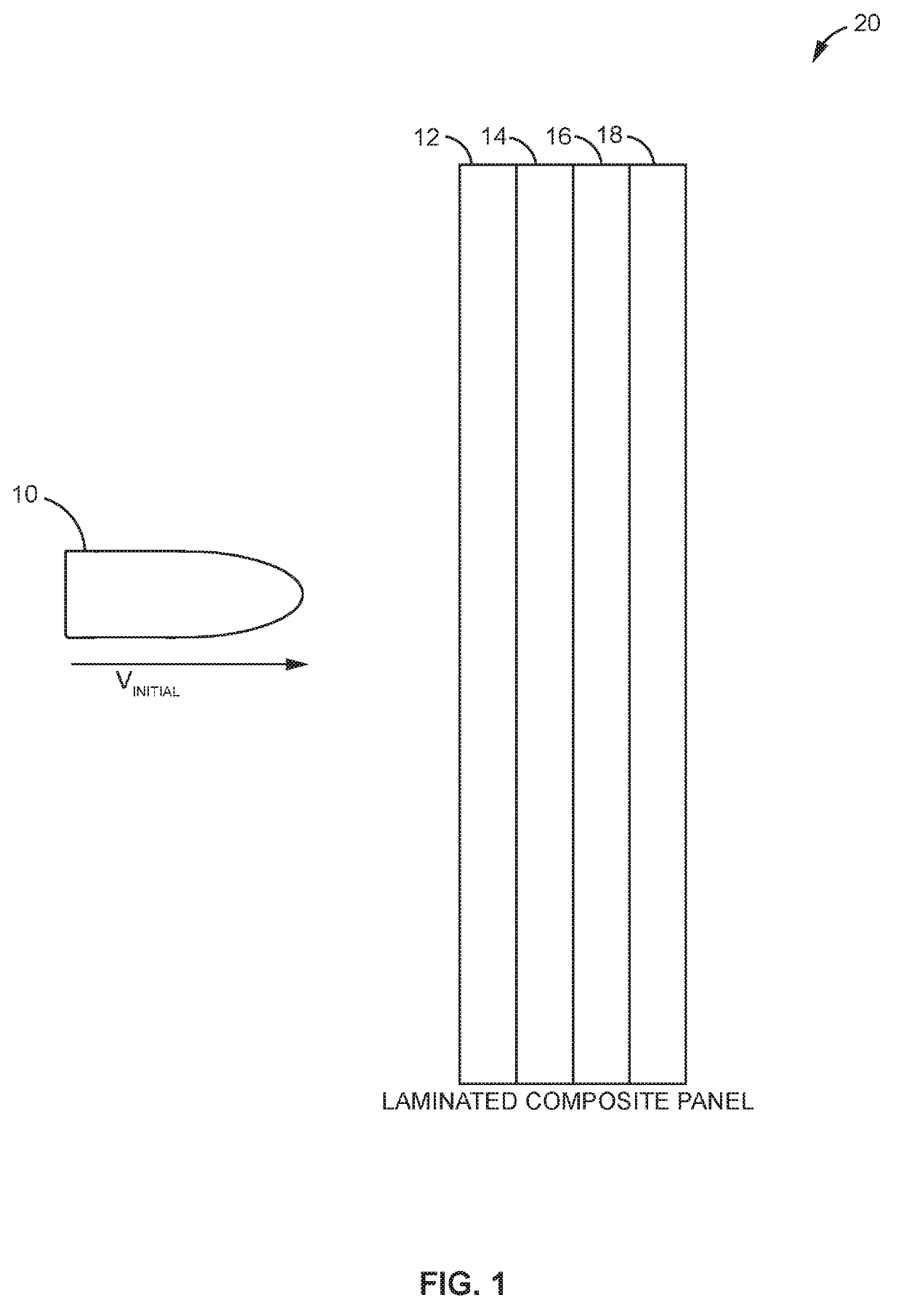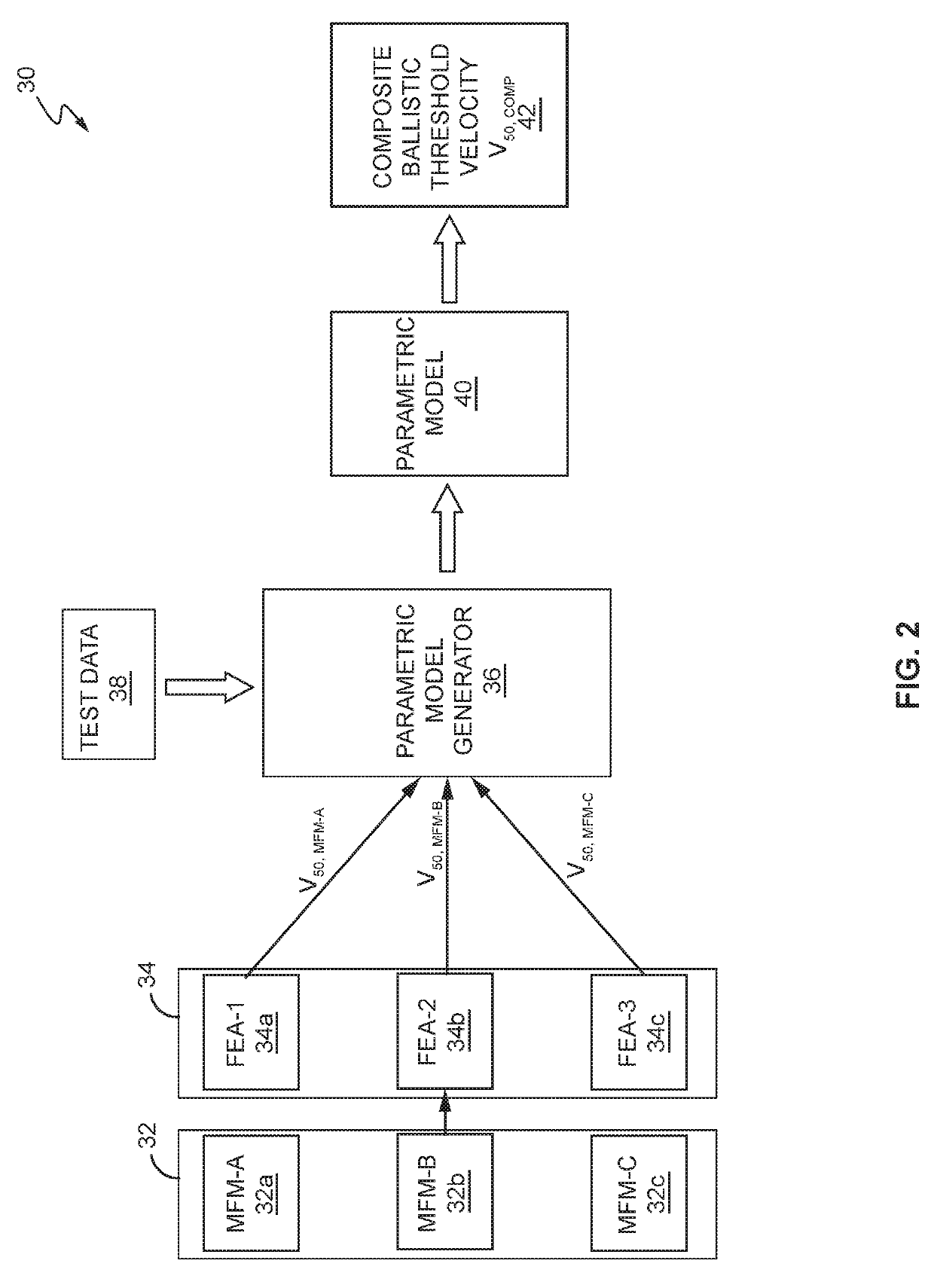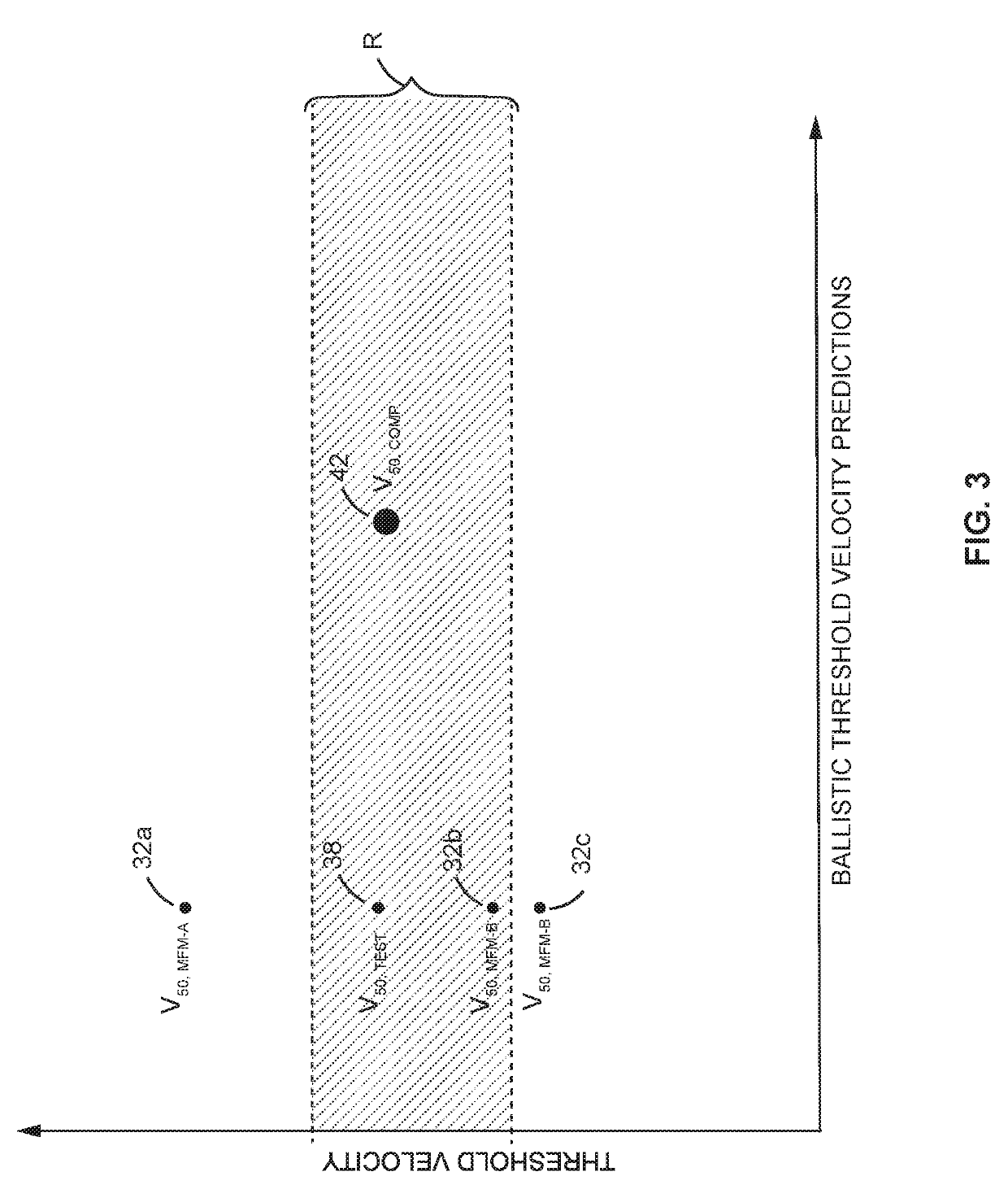Determining the Ballistic Threshold Velocity for a Composite Structure Using Multiple Failure Models
a composite structure and ballistic threshold velocity technology, applied in the field of material failure analysis, can solve the problems of inability to accommodate complex materials, high cost, time-consuming, etc., and achieve the effect of reducing the cost of complex materials
- Summary
- Abstract
- Description
- Claims
- Application Information
AI Technical Summary
Benefits of technology
Problems solved by technology
Method used
Image
Examples
Embodiment Construction
[0030]Aspects of the present disclosure relate to ballistic impact modeling for “composite structures” comprising multiple materials. Such composite structures include, but are not limited to, laminated composite panels comprising a plurality of different material layers.
[0031]The ballistic threshold velocity V50 is defined as the velocity at which a projectile penetrates a given material 50% of the time. Usually, values for V50 are determined through extensive ballistic testing on the materials. However, in many cases, such experimentation is not possible, very costly, or simply not efficient to implement. Therefore, alternatively, V50 can be estimated using known finite element analysis (FEA) techniques. With these techniques, computers estimate the V50 of a given material to predict how certain ballistic-related stresses and loads will affect that particular material. Regardless of whether V50 is determined through experimentation or by utilizing a predictive FEA approach, though...
PUM
 Login to View More
Login to View More Abstract
Description
Claims
Application Information
 Login to View More
Login to View More - R&D
- Intellectual Property
- Life Sciences
- Materials
- Tech Scout
- Unparalleled Data Quality
- Higher Quality Content
- 60% Fewer Hallucinations
Browse by: Latest US Patents, China's latest patents, Technical Efficacy Thesaurus, Application Domain, Technology Topic, Popular Technical Reports.
© 2025 PatSnap. All rights reserved.Legal|Privacy policy|Modern Slavery Act Transparency Statement|Sitemap|About US| Contact US: help@patsnap.com



